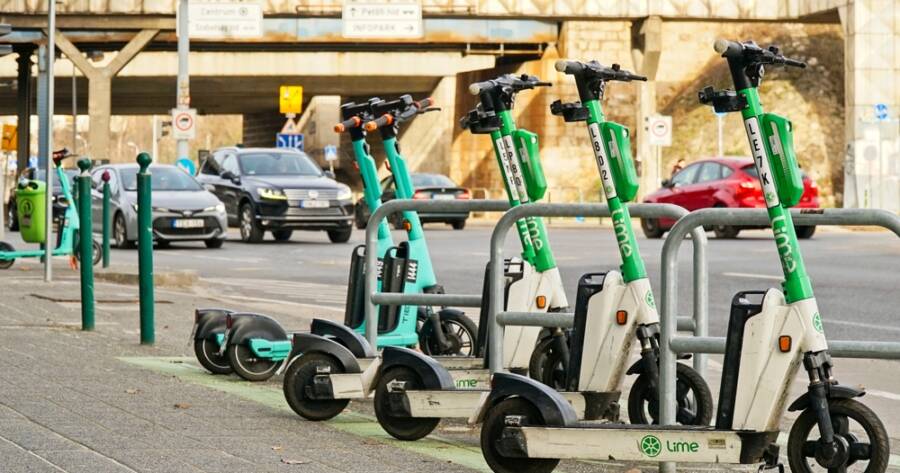From bumper-to-bumper traffic to rising fuel prices and growing climate concerns, traditional car ownership is beginning to lose its shine for many consumers. In response, a quiet revolution is gaining momentum in cities across the globe: micromobility.
Micromobility refers to small, lightweight vehicles—like bikes, e-scooters, mopeds, and their electric counterparts—that typically travel under 25 mph and are designed for short-distance trips. Once considered a niche or novelty, micromobility is now emerging as a serious alternative to cars, especially in urban areas where space, speed, and sustainability matter most.
Here’s why analysts believe micromobility is more than just a passing trend—and what it could mean for the future of transportation.
What’s Fueling the Micromobility Movement?
Several factors are driving the shift toward smaller, smarter forms of transportation:
1. Traffic Fatigue
Long commutes, gridlock, and limited parking have made driving in major cities increasingly frustrating. Micromobility options, especially e-scooters and bikes, allow riders to bypass traffic and travel more directly.
2. Environmental Awareness
As concerns over climate change and air quality grow, people are rethinking their daily transportation choices. E-scooters and e-bikes produce a fraction of the emissions of gas-powered vehicles, making them appealing to eco-conscious consumers.
3. The Cost of Car Ownership
Owning a car means paying for gas, maintenance, insurance, registration, and more. Micromobility—particularly shared systems or low-cost e-bikes—offers a much cheaper way to get around, especially for those who don’t need to drive long distances regularly.
4. Urban Design Changes
Cities are increasingly investing in bike lanes, pedestrian zones, and shared mobility programs. These infrastructure improvements make micromobility not just possible, but practical.
Examples of Micromobility in Action
Micromobility comes in many forms, from personally owned devices to pay-per-use rental models. Some of the most common include:
-
Bicycles (traditional and electric): Still the most popular form of micromobility, especially with the rise of e-bikes that make longer trips and hilly routes more accessible.
-
Electric scooters (e-scooters): Compact, easy to operate, and often available through sharing apps like Bird, Lime, and Spin.
-
Electric mopeds: A faster alternative that still falls within micromobility due to their small size and relatively low speed.
-
Hoverboards and one-wheels: Popular among younger users, though less commonly used for commuting.
Micromobility is especially effective for trips under five miles—what many refer to as the “last mile” problem—getting people from public transit stops to their final destination, or simply navigating short distances within neighborhoods or business districts.
The Role of Tech and Apps
The rise of micromobility is powered by digital convenience. Most shared systems operate via smartphone apps, allowing users to locate, unlock, and pay for rides in seconds. Real-time GPS tracking, route planning, and payment integration have made hopping on a scooter or e-bike nearly as simple as ordering a ride share.
In addition, tech integrations like battery monitoring, speed control, and safety sensors are making micromobility devices smarter and safer—further encouraging adoption.
Challenges and Considerations
While micromobility offers exciting potential, it also comes with challenges:
-
Safety concerns: Riders often share roads with cars or navigate poorly designed bike lanes, increasing the risk of accidents. Helmets and rider education are critical.
-
Regulation and parking: Cities are still developing clear policies around where devices can be ridden or parked. Cluttered sidewalks and improperly discarded scooters can be an issue.
-
Weather and geography: In cold or rainy climates, micromobility may not be a year-round solution. Likewise, hilly or poorly connected areas can make it impractical.
-
Equity and access: Not all communities have the same access to micromobility programs. Ensuring affordable options across demographics is an ongoing goal.
Despite these issues, many cities and companies are working to overcome barriers through infrastructure improvements, safety programs, and more inclusive pricing models.
A Shift in Consumer Mindset
Micromobility doesn’t necessarily mean giving up your car completely—but it does reflect a growing shift in how people view transportation. For younger generations in particular, owning a car is no longer the status symbol it once was. Instead, they’re prioritizing flexibility, sustainability, and convenience.
As infrastructure evolves and more consumers seek practical, planet-friendly ways to move around, micromobility is poised to play a much bigger role. Whether you’re using it to commute, explore your city, or run errands, these small vehicles could represent a big change in how we navigate our daily lives.

